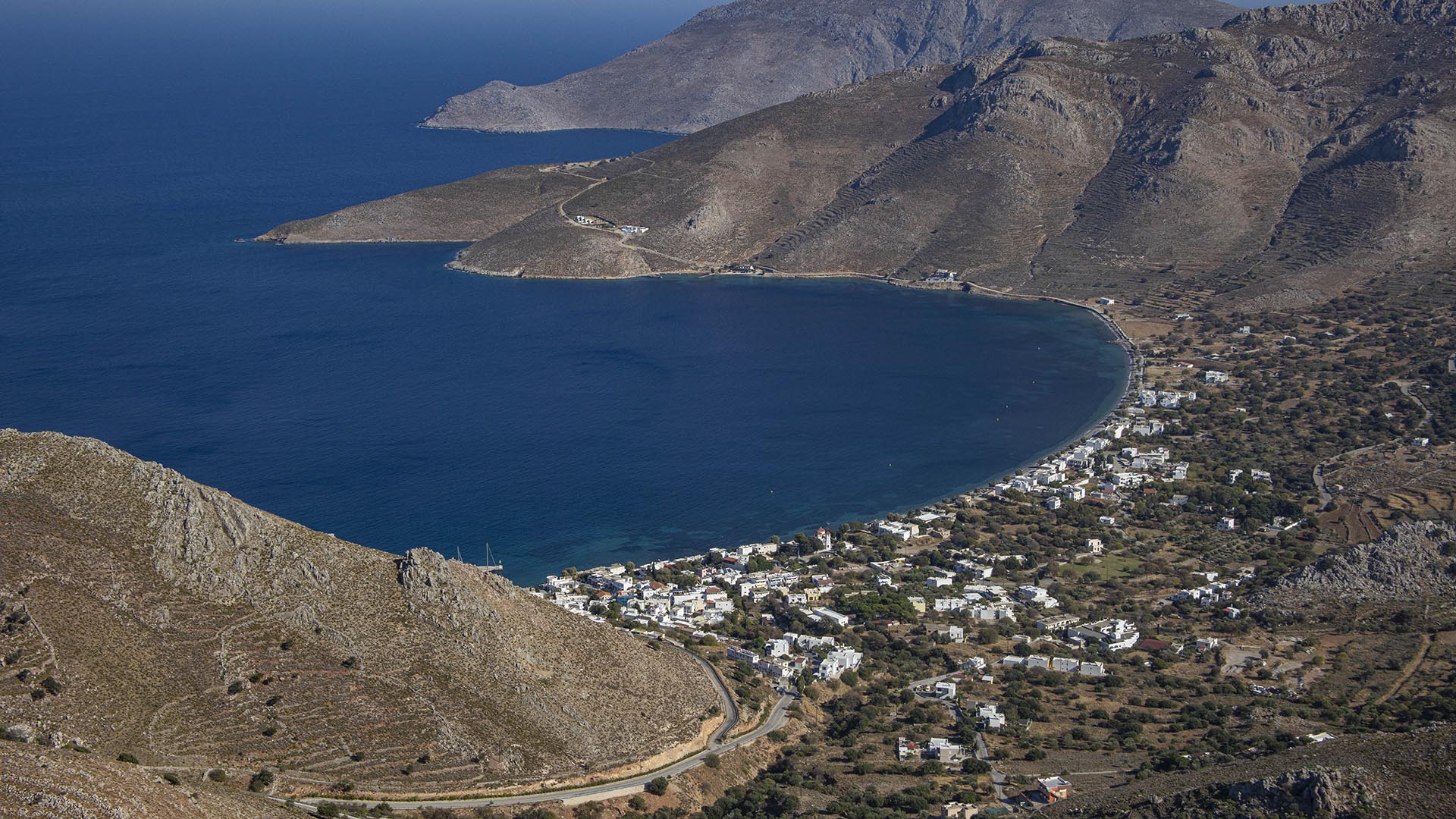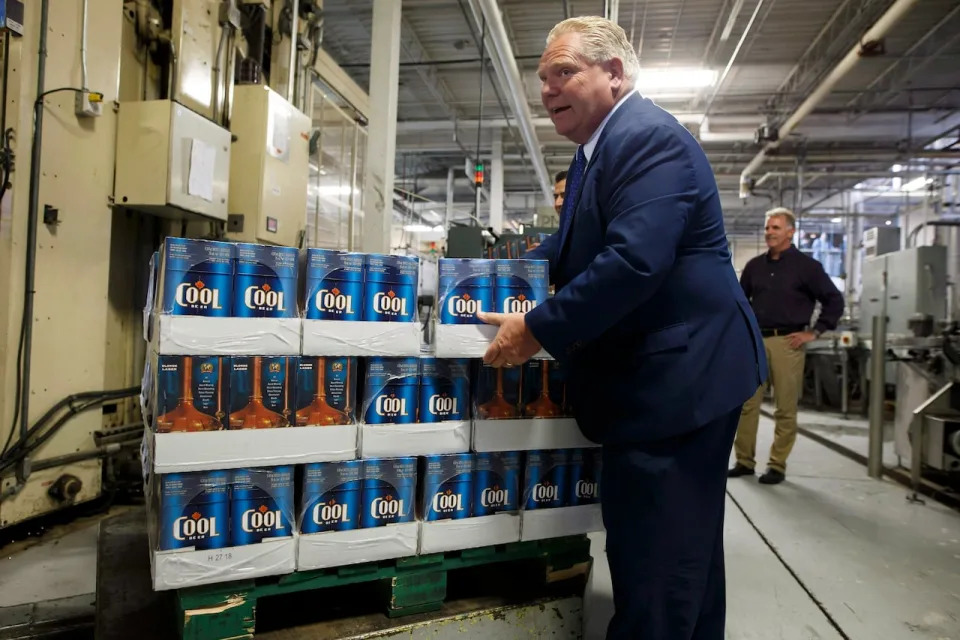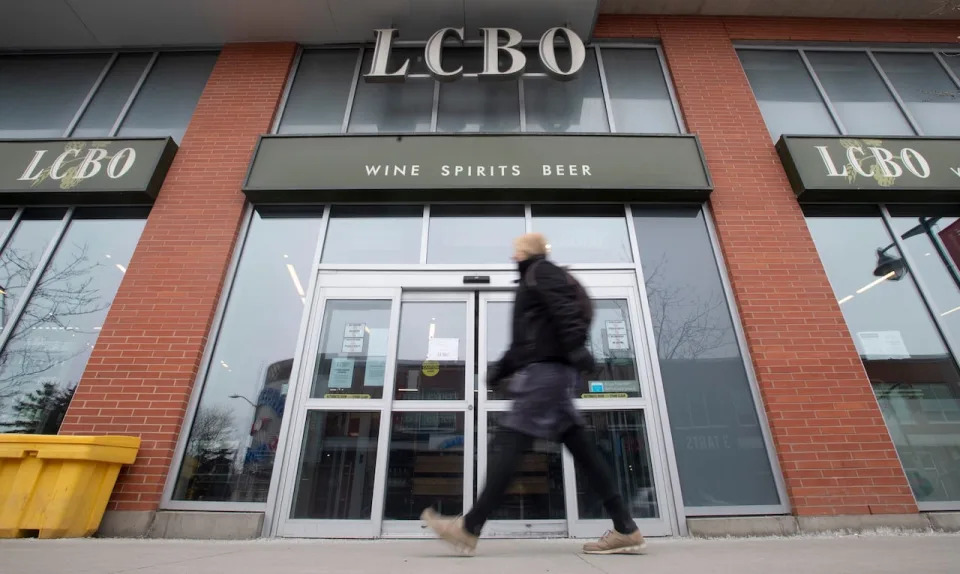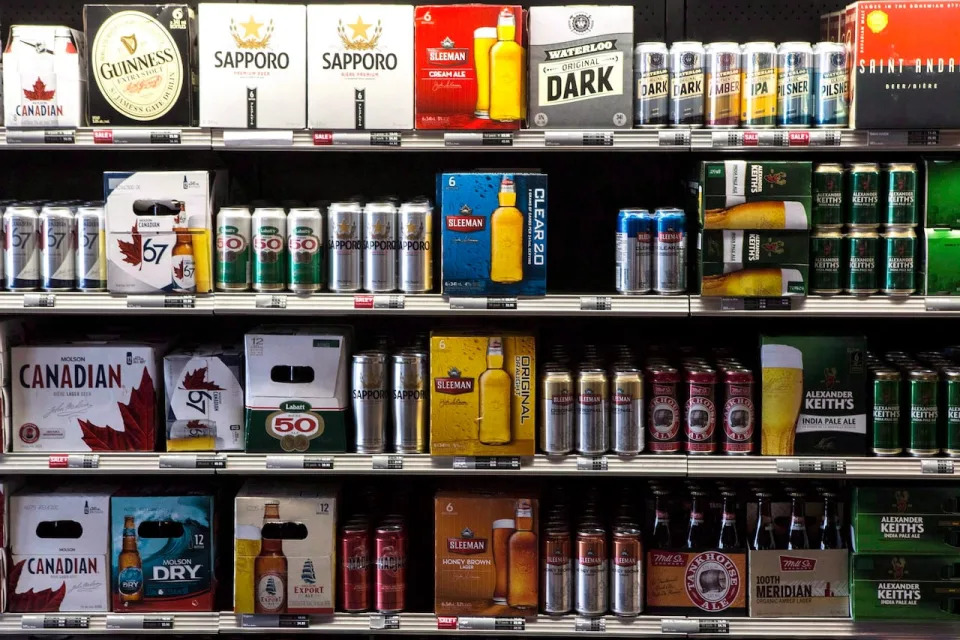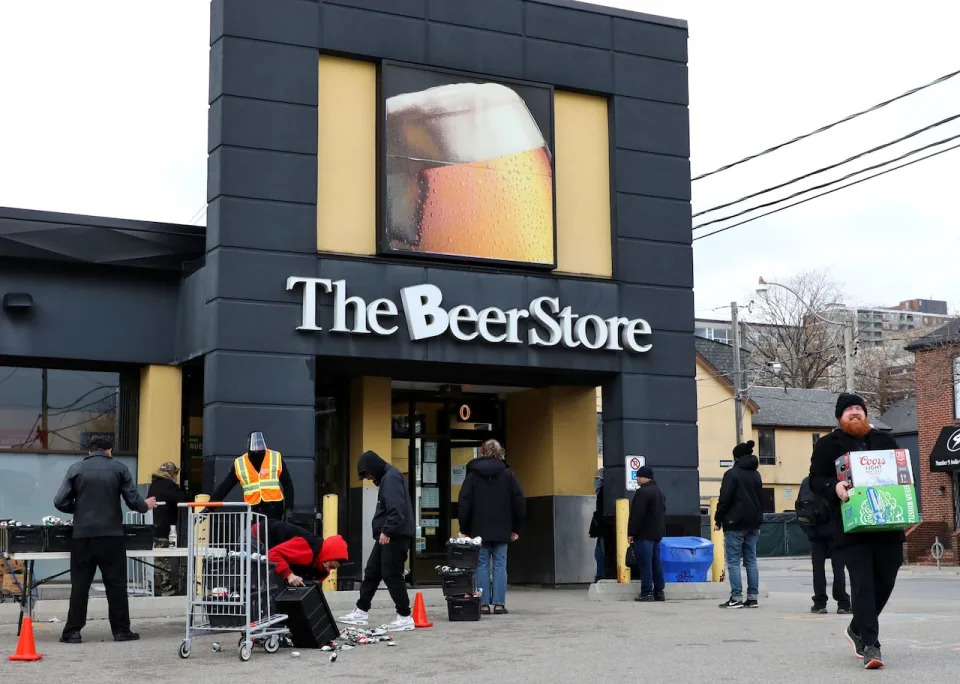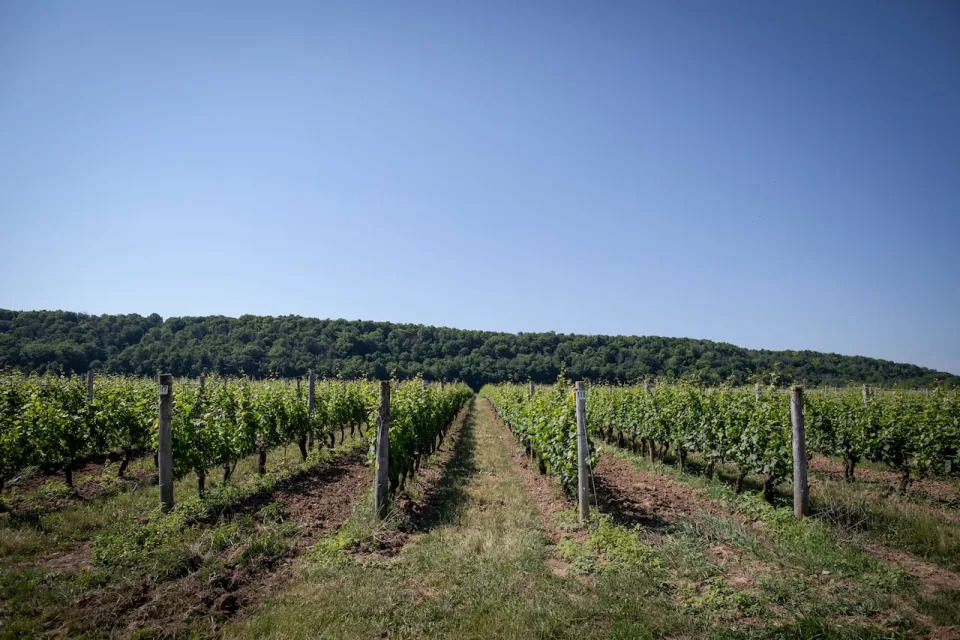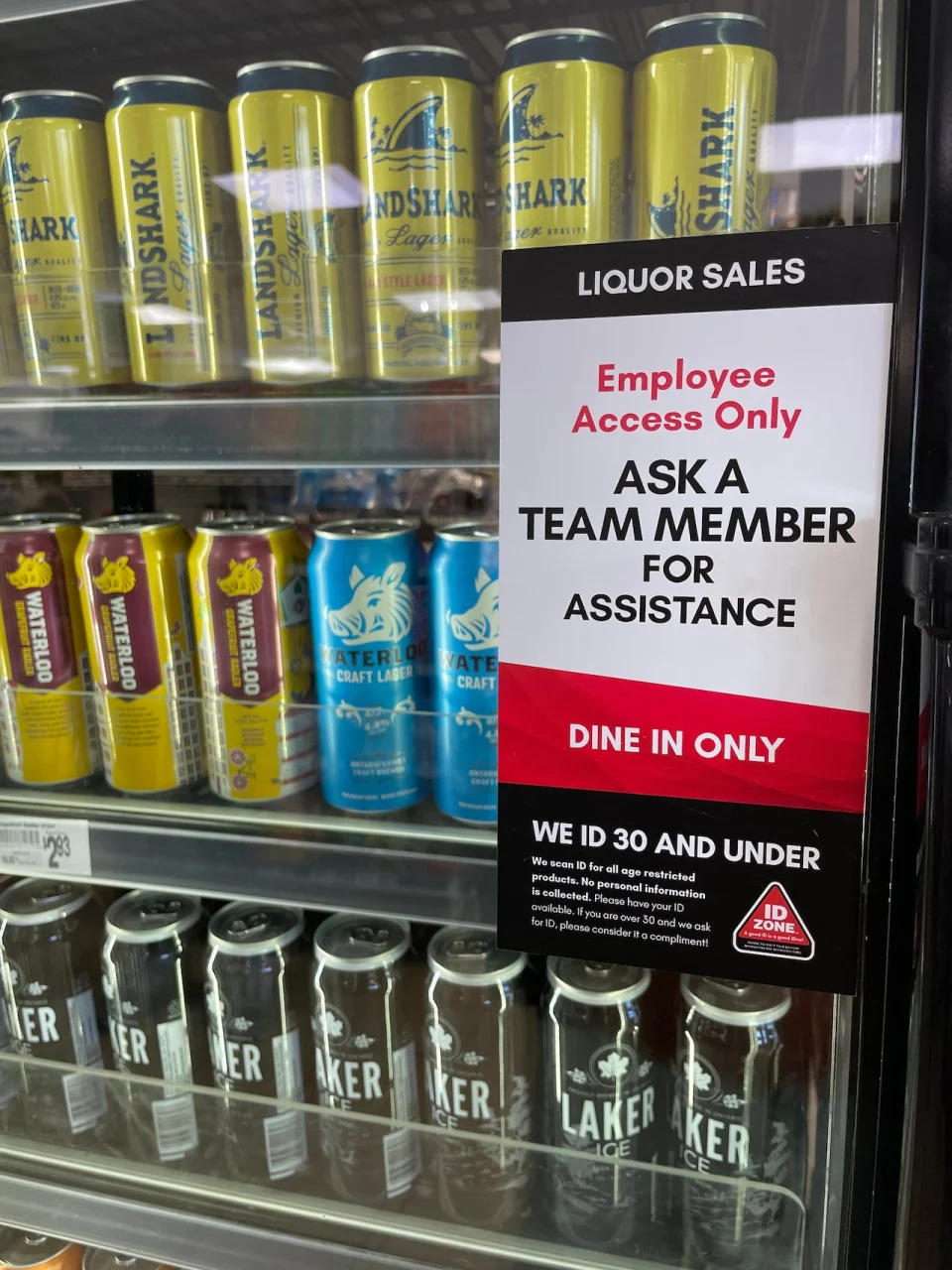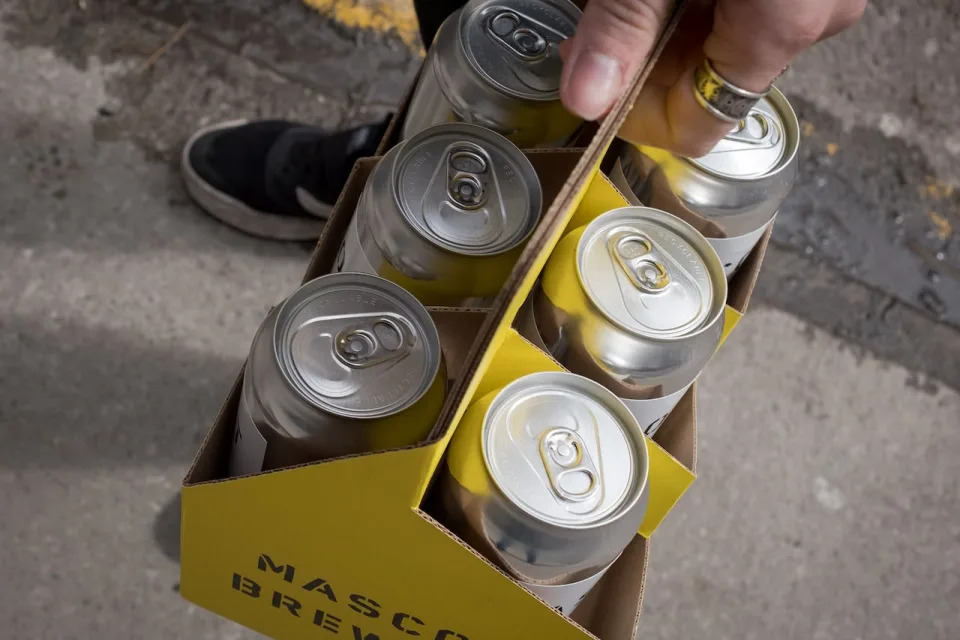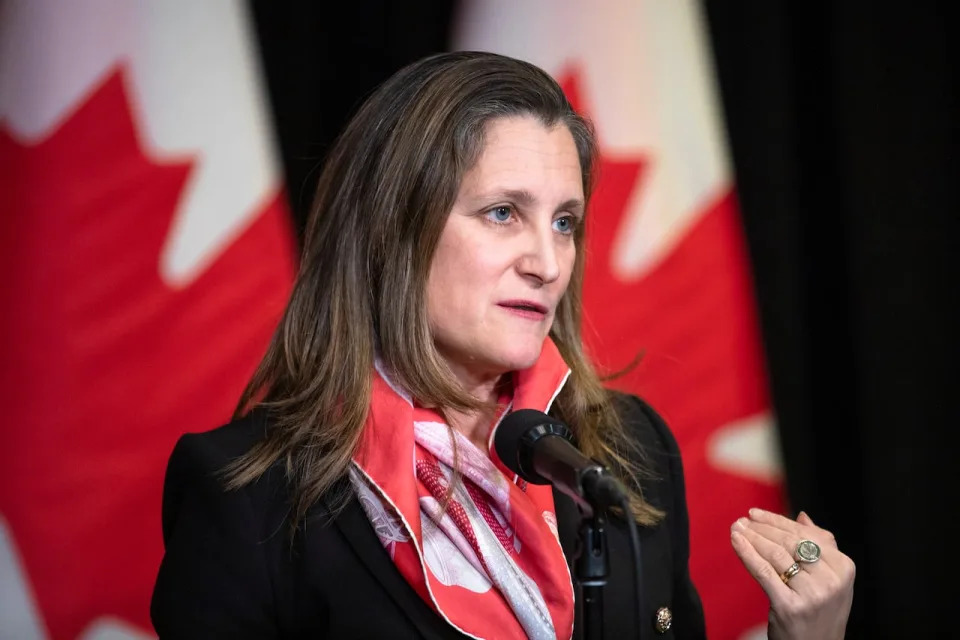by ProPublica for Daily Kos
Sunday, November 19, 2023

Kevin Hecht takes a picture of the New Orleans skyline from the top of a levee in the Holy Cross neighborhood as rain from the outer bands of Hurricane Barry moves into the area on July 12, 2019 in New Orleans, Louisiana.
by Tony Schick
ProPublica and Oregon Public Broadcasting
ProPublica is a Pulitzer Prize-winning investigative newsroom. Sign up for The Big Story newsletter to receive stories like this one in your inbox.
Since it was founded in 1802, the U.S. Army Corps of Engineers has taken on some of the nation’s most ambitious attempts to manipulate nature for the benefit of human beings. The agency’s motto — “Essayons!” — translates from French to “Let Us Try!” And try it does.
The Corps has plunged ahead time and again with billion-dollar construction projects based on assumptions that don’t exactly pan out. In some cases, the agency goes on to spend billions more restoring the natural environment it manipulated.
We reported in late October on the Corps’ $1.9 billion proposal to remedy the fact that its 13 dams on the Willamette River in Oregon have helped drive iconic salmon to the brink of extinction.
Trouble is, that recovery plan is also based on assumptions that might not match reality. Central to what the Corps proposes is a pair of fish collectors, which the agency describes as essentially giant fish vacuums. Salmon the size of baby carrots would be whooshed into it, trapped in tanks and trucked around dams on their migration to the sea. The devices are to be built on a massive scale never before tested, and the Corps estimates a single collector could cost up to $450 million. A recent scientific review concluded that the kind of approach the Corps is pitching in Oregon won’t save salmon but “only prolong their decline to extinction.”
The Corps says it’s the best option for helping salmon while keeping dams operational for hydropower customers, boaters and other users of the Willamette systems — although many of those users say they would be fine with lowering reservoirs and curtailing hydropower if it helped fish.
The Oregon story is one example in a long line of Corps projects that have drawn criticism over the years.
In 1971, the New York Times editorial board declared “the American people are becoming increasingly fed up with the expensive, boondoggling, make‐work, environmentally destructive projects that to a large degree characterize the civilian activities of the Army’s Corps of Engineers.”
Three decades later, a Washington Post investigation found the Corps pursued “billions of dollars’ worth of taxpayer-funded water projects, many with significant environmental costs and minimal economic benefits.”
The Government Accountability Office concluded in 2006 that the Corps’ work was “fraught with errors, mistakes, and miscalculations, and used invalid assumptions and outdated data.”
ProPublica, with its partner Reveal from the Center for Investigative Reporting, has reported that the Corps knew since 1852 that levees force rivers to run higher and faster and yet persisted in using them for flood control.
When asked for a response to critics, the Corps this week issued a statement in which it acknowledged that over its long history, “there have been challenges associated with some of our projects. As an organization, we are always striving to be better.”
The agency said lessons learned from past projects have prompted changes to planning processes and the incorporation of “independent peer review.” The Corps said it’s working to modernize business methods, materials and designs while evolving in its approach to environmental and social concerns. Corps leaders are committed, the statement said, “to safely deliver projects, on time and within budget.”
Here are some examples of Corps projects that didn’t go as expected.
New Orleans Levee System
Year begun: 1965
Location: New Orleans
The plan: Prevent flooding during coastal storms by building a series of levees around Greater New Orleans.
What actually happened: In 2005, design flaws allowed a storm surge from Hurricane Katrina to breach the walls of the $738 million levee system that the Corps had built over the preceding four decades. The storm and flooding killed 1,392 people and caused damage totaling an inflation-adjusted $190 billion. The American Society of Civil Engineers called the levee failures “the worst engineering catastrophe in US History,” and the Corps later acknowledged its levees were “a system in name only.”
Tennessee-Tombigbee Waterway
Year begun: 1971
Location: Tennessee, Mississippi, Alabama
The plan: Build a 234-mile artificial waterway connecting the Tennessee River to the Tombigbee River in Alabama, creating a new channel to the Gulf of Mexico and an estimated 208,000 new jobs in economically depressed areas of Alabama, Mississippi and Tennessee.
What actually happened:The Associated Press reported in 2019 that the Tenn-Tom, as it’s known, “has never come close to traffic projections used to sell it to the public, and poverty rates have increased in most of the counties it flows through in Mississippi and Alabama.” New jobs totaled 29,000, a study by Troy University found — or 179,000 less than early projections. The project cost $2 billion.
St. John’s Bayou-New Madrid Floodway
Year begun: 1986
Location: Missouri Bootheel
The plan: Control flooding in southeast Missouri with a construction project that would include levees and two giant rainwater pumps and cost $165 million.
What actually happened: The project was never completed. The Corps’ own lobbyist described the idea as an “economic dud with huge environmental consequences,” The Washington Post reported in 2006. According to earlier reporting by the Post, the Corps’ efforts were expected to drain 36,000 acres of wetlands and deliver virtually no actual flood protection.
Olmsted Locks and Dam
Year begun: 1988
Location: Olmsted, Illinois
The plan: Build a lock and dam system on the Ohio River to reduce delays on one of the most commercially trafficked water routes in the country, near the meeting of the Mississippi, Ohio, Tennessee and Cumberland rivers. The project was scheduled to be finished in 1998 at a cost of $700 million. The Corps projected the locks and dam would generate $920 million in economic benefits annually.
What actually happened: The project wasn’t completed until 2018 — 20 years later than expected. The cost, $3 billion, was four times what the Corps said it would be, and the economic benefits were $236 million, or about one-fourth the original estimate. In 2021, a collection of farmers along the river sued the federal government, claiming the project had increased the frequency and severity of flooding. The Corps sought to dismiss the suit, arguing the river’s flood pattern had not been severely altered. The case is pending.
Savannah Harbor Dredging
Year begun: 1999
Location: Savannah, Georgia
The plan: Dredge Savannah’s harbor to increase commercial shipping. When approved in 1999, the cost was pegged at $459 million.
What actually happened: The Corps was sued by environmental groups and state environmental regulators in South Carolina, where Corps officials were planning to dump potentially toxic dredge spoils. The Corps tried to get the lawsuit dismissed but eventually reached a settlement that included additional pollution controls. The effort took two decades thanks to repeated delays. Meanwhile, the cost more than doubled, to $973 million.
Florida Everglades Restoration
Year begun: 2000
Location: Florida Everglades
The plan: Undo the damage done by engineering projects that degraded the famed ecosystem to half its original size. This damage occurred decades earlier, when the Corps was authorized to build levees around the Everglades and drain the wetlands. Key components of the restoration effort were to include building a massive reservoir the size of Manhattan and a series of artificial marshes meant to funnel clean water into the Everglades. The work would cost $8 billion and take 30 years to complete.
What actually happened: The Corps’ subsequent estimates put the project at $23 billion and 50 years to complete. Two decades passed before the Corps and state officials finally broke ground on the reservoir. According to the Miami Herald: “Even the Army Corps, which is building the reservoir, has signaled it’s worried about whether the finished project will meet the water quality standards it’s supposed to. If the new project missed the mark, it’s possible the ‘crown jewel’ of Everglades restoration might not work.”
Controlling Columbia River Salmon Predators
Year begun: 2015
Location: Mouth of the Columbia River, Oregon-Washington border
The plan: A colony of double-crested cormorants had settled on a set of islands that the Corps built up with soil it dredged from the riverbed, and the birds were feasting on endangered juvenile salmon as they tried to make their way to the ocean. To save endangered fish, the Corps decided to shoot the birds and put oil on their eggs to prevent them from hatching.
What actually happened: Killing the birds drove the colony to a bridge several miles upriver, where the cormorants ate even more salmon than before. Then the birds inundated the bridge with their droppings, causing an estimated $1 million in damage each year.
Coast Fortification in New Jersey
Year begun: 2016
Location: Margate, New Jersey
The plan: Construct sand dunes as part of a statewide effort to fortify the coast after Hurricane Sandy in 2012, at an estimated cost of $63 million.
What actually happened: Margate residents had resisted the project, arguing that an existing retaining wall was sufficient and that dune construction would cause drainage problems for the seaside town. Their fears bore out in 2017, when water pooled behind newly constructed dunes. The town sued. During the trial, according to The Philadelphia Inquirer, a Corps official acknowledged the standing water had surpassed agency predictions and that the agency wanted to continue building, despite being at a loss for solutions. Margate Mayor Michael Becker told the Inquirer the emotional toll of the beach construction was “worse than Hurricane Sandy.” After finding that the town’s concerns were “understandable and cry out for help,” a judge ruled construction could continue if the Corps fenced off ponds and built raised walkways for residents.
Dredging the Mississippi
Year begun: 2018
Location: Mississippi River near New Orleans
The plan: Dredge the Mississippi, deepening the 45-foot-deep channel to 50 feet at the river’s mouth to allow for more shipping.
What actually happened: After the $250 million dredging was completed in 2022, saltwater from the Gulf of Mexico started entering the river. The Corps had known for decades that its continued efforts to deepen the river channel would trigger an intrusion of saltwater, according to The New Orleans Advocate. The agency predicted an underwater dam could contain the invading saltwater, but, according to Bloomberg, this year it failed to do so. To fix the drinking water problem, New Orleans is now building a pipe to pull freshwater from farther upriver, which Bloomberg reports could cost $100 million to $250 million.
by Tony Schick
ProPublica and Oregon Public Broadcasting
ProPublica is a Pulitzer Prize-winning investigative newsroom. Sign up for The Big Story newsletter to receive stories like this one in your inbox.
Since it was founded in 1802, the U.S. Army Corps of Engineers has taken on some of the nation’s most ambitious attempts to manipulate nature for the benefit of human beings. The agency’s motto — “Essayons!” — translates from French to “Let Us Try!” And try it does.
The Corps has plunged ahead time and again with billion-dollar construction projects based on assumptions that don’t exactly pan out. In some cases, the agency goes on to spend billions more restoring the natural environment it manipulated.
We reported in late October on the Corps’ $1.9 billion proposal to remedy the fact that its 13 dams on the Willamette River in Oregon have helped drive iconic salmon to the brink of extinction.
Trouble is, that recovery plan is also based on assumptions that might not match reality. Central to what the Corps proposes is a pair of fish collectors, which the agency describes as essentially giant fish vacuums. Salmon the size of baby carrots would be whooshed into it, trapped in tanks and trucked around dams on their migration to the sea. The devices are to be built on a massive scale never before tested, and the Corps estimates a single collector could cost up to $450 million. A recent scientific review concluded that the kind of approach the Corps is pitching in Oregon won’t save salmon but “only prolong their decline to extinction.”
The Corps says it’s the best option for helping salmon while keeping dams operational for hydropower customers, boaters and other users of the Willamette systems — although many of those users say they would be fine with lowering reservoirs and curtailing hydropower if it helped fish.
The Oregon story is one example in a long line of Corps projects that have drawn criticism over the years.
In 1971, the New York Times editorial board declared “the American people are becoming increasingly fed up with the expensive, boondoggling, make‐work, environmentally destructive projects that to a large degree characterize the civilian activities of the Army’s Corps of Engineers.”
Three decades later, a Washington Post investigation found the Corps pursued “billions of dollars’ worth of taxpayer-funded water projects, many with significant environmental costs and minimal economic benefits.”
The Government Accountability Office concluded in 2006 that the Corps’ work was “fraught with errors, mistakes, and miscalculations, and used invalid assumptions and outdated data.”
ProPublica, with its partner Reveal from the Center for Investigative Reporting, has reported that the Corps knew since 1852 that levees force rivers to run higher and faster and yet persisted in using them for flood control.
When asked for a response to critics, the Corps this week issued a statement in which it acknowledged that over its long history, “there have been challenges associated with some of our projects. As an organization, we are always striving to be better.”
The agency said lessons learned from past projects have prompted changes to planning processes and the incorporation of “independent peer review.” The Corps said it’s working to modernize business methods, materials and designs while evolving in its approach to environmental and social concerns. Corps leaders are committed, the statement said, “to safely deliver projects, on time and within budget.”
Here are some examples of Corps projects that didn’t go as expected.
New Orleans Levee System
Year begun: 1965
Location: New Orleans
The plan: Prevent flooding during coastal storms by building a series of levees around Greater New Orleans.
What actually happened: In 2005, design flaws allowed a storm surge from Hurricane Katrina to breach the walls of the $738 million levee system that the Corps had built over the preceding four decades. The storm and flooding killed 1,392 people and caused damage totaling an inflation-adjusted $190 billion. The American Society of Civil Engineers called the levee failures “the worst engineering catastrophe in US History,” and the Corps later acknowledged its levees were “a system in name only.”
Tennessee-Tombigbee Waterway
Year begun: 1971
Location: Tennessee, Mississippi, Alabama
The plan: Build a 234-mile artificial waterway connecting the Tennessee River to the Tombigbee River in Alabama, creating a new channel to the Gulf of Mexico and an estimated 208,000 new jobs in economically depressed areas of Alabama, Mississippi and Tennessee.
What actually happened:The Associated Press reported in 2019 that the Tenn-Tom, as it’s known, “has never come close to traffic projections used to sell it to the public, and poverty rates have increased in most of the counties it flows through in Mississippi and Alabama.” New jobs totaled 29,000, a study by Troy University found — or 179,000 less than early projections. The project cost $2 billion.
St. John’s Bayou-New Madrid Floodway
Year begun: 1986
Location: Missouri Bootheel
The plan: Control flooding in southeast Missouri with a construction project that would include levees and two giant rainwater pumps and cost $165 million.
What actually happened: The project was never completed. The Corps’ own lobbyist described the idea as an “economic dud with huge environmental consequences,” The Washington Post reported in 2006. According to earlier reporting by the Post, the Corps’ efforts were expected to drain 36,000 acres of wetlands and deliver virtually no actual flood protection.
Olmsted Locks and Dam
Year begun: 1988
Location: Olmsted, Illinois
The plan: Build a lock and dam system on the Ohio River to reduce delays on one of the most commercially trafficked water routes in the country, near the meeting of the Mississippi, Ohio, Tennessee and Cumberland rivers. The project was scheduled to be finished in 1998 at a cost of $700 million. The Corps projected the locks and dam would generate $920 million in economic benefits annually.
What actually happened: The project wasn’t completed until 2018 — 20 years later than expected. The cost, $3 billion, was four times what the Corps said it would be, and the economic benefits were $236 million, or about one-fourth the original estimate. In 2021, a collection of farmers along the river sued the federal government, claiming the project had increased the frequency and severity of flooding. The Corps sought to dismiss the suit, arguing the river’s flood pattern had not been severely altered. The case is pending.
Savannah Harbor Dredging
Year begun: 1999
Location: Savannah, Georgia
The plan: Dredge Savannah’s harbor to increase commercial shipping. When approved in 1999, the cost was pegged at $459 million.
What actually happened: The Corps was sued by environmental groups and state environmental regulators in South Carolina, where Corps officials were planning to dump potentially toxic dredge spoils. The Corps tried to get the lawsuit dismissed but eventually reached a settlement that included additional pollution controls. The effort took two decades thanks to repeated delays. Meanwhile, the cost more than doubled, to $973 million.
Florida Everglades Restoration
Year begun: 2000
Location: Florida Everglades
The plan: Undo the damage done by engineering projects that degraded the famed ecosystem to half its original size. This damage occurred decades earlier, when the Corps was authorized to build levees around the Everglades and drain the wetlands. Key components of the restoration effort were to include building a massive reservoir the size of Manhattan and a series of artificial marshes meant to funnel clean water into the Everglades. The work would cost $8 billion and take 30 years to complete.
What actually happened: The Corps’ subsequent estimates put the project at $23 billion and 50 years to complete. Two decades passed before the Corps and state officials finally broke ground on the reservoir. According to the Miami Herald: “Even the Army Corps, which is building the reservoir, has signaled it’s worried about whether the finished project will meet the water quality standards it’s supposed to. If the new project missed the mark, it’s possible the ‘crown jewel’ of Everglades restoration might not work.”
Controlling Columbia River Salmon Predators
Year begun: 2015
Location: Mouth of the Columbia River, Oregon-Washington border
The plan: A colony of double-crested cormorants had settled on a set of islands that the Corps built up with soil it dredged from the riverbed, and the birds were feasting on endangered juvenile salmon as they tried to make their way to the ocean. To save endangered fish, the Corps decided to shoot the birds and put oil on their eggs to prevent them from hatching.
What actually happened: Killing the birds drove the colony to a bridge several miles upriver, where the cormorants ate even more salmon than before. Then the birds inundated the bridge with their droppings, causing an estimated $1 million in damage each year.
Coast Fortification in New Jersey
Year begun: 2016
Location: Margate, New Jersey
The plan: Construct sand dunes as part of a statewide effort to fortify the coast after Hurricane Sandy in 2012, at an estimated cost of $63 million.
What actually happened: Margate residents had resisted the project, arguing that an existing retaining wall was sufficient and that dune construction would cause drainage problems for the seaside town. Their fears bore out in 2017, when water pooled behind newly constructed dunes. The town sued. During the trial, according to The Philadelphia Inquirer, a Corps official acknowledged the standing water had surpassed agency predictions and that the agency wanted to continue building, despite being at a loss for solutions. Margate Mayor Michael Becker told the Inquirer the emotional toll of the beach construction was “worse than Hurricane Sandy.” After finding that the town’s concerns were “understandable and cry out for help,” a judge ruled construction could continue if the Corps fenced off ponds and built raised walkways for residents.
Dredging the Mississippi
Year begun: 2018
Location: Mississippi River near New Orleans
The plan: Dredge the Mississippi, deepening the 45-foot-deep channel to 50 feet at the river’s mouth to allow for more shipping.
What actually happened: After the $250 million dredging was completed in 2022, saltwater from the Gulf of Mexico started entering the river. The Corps had known for decades that its continued efforts to deepen the river channel would trigger an intrusion of saltwater, according to The New Orleans Advocate. The agency predicted an underwater dam could contain the invading saltwater, but, according to Bloomberg, this year it failed to do so. To fix the drinking water problem, New Orleans is now building a pipe to pull freshwater from farther upriver, which Bloomberg reports could cost $100 million to $250 million.

 IDF spokesperson Lt. Col. Jonathan Conricus shows one AK-47 rifle behind an MRI machine at Gaza's al-Shifa hospital complex.Israel Defense Forces/X
IDF spokesperson Lt. Col. Jonathan Conricus shows one AK-47 rifle behind an MRI machine at Gaza's al-Shifa hospital complex.Israel Defense Forces/X Two rifles are seen behind an MRI machine at the al-Shifa hospital complex in Gaza.Fox News/X
Two rifles are seen behind an MRI machine at the al-Shifa hospital complex in Gaza.Fox News/X

